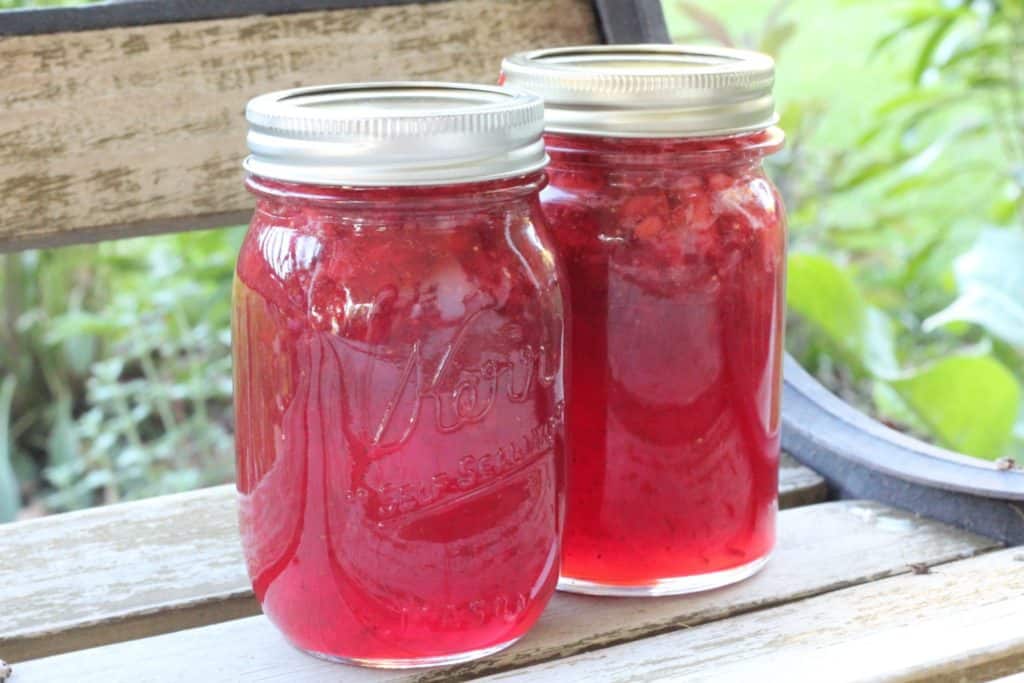Imagine the tantalizing aroma of freshly made jam, its vibrant hues dancing in the sunlight. But as you eagerly spread it on toast, a cruel reality strikes—the jam is far too runny, threatening to slide off your slice and onto your pristine tablecloth. Dismayed, you ponder the elusive secrets of jam-making, wondering how to transform this liquid mess into a culinary masterpiece. Fret not, dear reader, for within this article lies the roadmap to jam perfection, guiding you to the delectable shores where your spreads achieve their ideal consistency.

Image: creativehomemaking.com
Jam, a culinary staple with a storied history, has graced our palates for centuries. From the regal courts of ancient Rome to the humble kitchens of modern homes, its delectable allure knows no bounds. However, crafting the perfect jam is a delicate art, one that demands precision in every step. The key to achieving that elusive thick, spreadable consistency lies in understanding the fundamental principles of jam-making and embracing a few culinary secrets.
The Science Behind Runny Jams: A Matter of Balance
At its core, jam is a harmonious blend of fruit, sugar, and pectin. Pectin, a natural thickener found in fruits, plays a pivotal role in giving jams their signature gel-like texture. When sugar and heat are introduced, a magical transformation occurs. The pectin molecules undergo a change in their molecular structure, entangling with each other to form a complex network that traps the fruit juices within its embrace. This network, known as a gel, provides jams with their delightful spreadability and velvety texture.
However, when the balance between fruit, sugar, and pectin is disrupted, the jam becomes vulnerable to the dreaded runny abyss. An insufficient amount of pectin can leave the jam perilously thin, while an overabundance can lead to an overly firm, jelly-like consistency. Additionally, the type of fruit used can further influence the jam’s thickness. Fruits with naturally high pectin content, such as apples and cranberries, require less additional pectin than their low-pectin counterparts, like strawberries and raspberries.
Mastering the Art: Practical Tips for Perfect Consistency
Armed with the scientific understanding of jam consistency, let’s delve into the practical steps you can take to ensure your jams achieve that coveted spreadable perfection:
1. Choose the Right Fruit and Sugar Ratio:
The ratio of fruit to sugar is a delicate dance that determines the jam’s final texture. Start with a ratio of 1 part fruit to 3 parts sugar for a balanced consistency. If using low-pectin fruits, increase the sugar to 1 part fruit to 4 parts sugar.

Image: www.pinterest.com
2. Pectin Power: A Helping Hand for Consistency:
If nature has not bestowed your chosen fruit with generous pectin levels, fret not. Commercial pectin is your culinary ally, available in powdered or liquid form. Use 1 tablespoon of pectin per 4 cups of fruit to reinforce the jam’s structure.
3. Acidic Affair: Abalancing Act for Gelling:
Acidity plays a crucial role in pectin’s ability to gel. Fruits that lack natural acidity, such as peaches and apricots, benefit from a squeeze of lemon juice or a dash of citric acid to enhance their gelling potential.
4. Cooking Time: Precision in the Pursuit of Perfection:
The cooking time is the crucible where the jam’s transformation takes place. Bring the mixture to a rolling boil, then reduce the heat to medium-low. Watch attentively as the jam thickens. A drop of jam spooned onto a cold plate should wrinkle slightly when you push it with your finger, indicating the ideal consistency.
5. A Sensory Symphony: Trust Your Senses:
While temperature and time provide useful guidelines, the ultimate judge of jam consistency is your senses. Stirring and tasting the jam frequently allows you to discern its progress and make adjustments as needed.
Expert Insights: Wisdom from the Culinary Masters
“The key to perfect jam lies in understanding the delicate balance between fruit, sugar, and pectin. By mastering these elements, you can transform humble fruits into culinary delights that spread joy on any occasion.” – Chef Emily Roux
“Acidity is the unsung hero of successful jam-making. A touch of lemon juice or citric acid can work wonders, especially when using low-pectin fruits.” – Cookbook Author and Jam Enthusiast, Anya Levykin
How To Fix Runny Jam
Embrace the Sweet Conclusion: A Sticky Symphony of Flavors
With a little practice and a dash of patience, you will master the art of jam-making. Your creations will adorn your breakfast tables, delighting the taste buds of your family and friends. Embrace the process, experiment with different fruits and flavors, and never lose sight of the joy that comes from crafting homemade delicacies.
Remember, the pursuit of culinary perfection is a journey, not a destination. Embrace the learning process, and you will be rewarded with jams that not only taste divine but also evoke a sense of accomplishment and pride. So next time you encounter runny jam, do not despair. Instead, channel your inner culinary alchemist and transform it into a thick, spreadable masterpiece worthy of any culinary connoisseur.